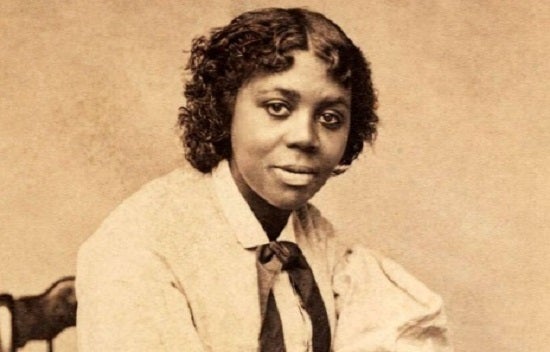Judy Moore: Let’s look at the life and art of Edmonia Lewis
Published 12:00 pm Thursday, February 16, 2023
|
Getting your Trinity Audio player ready...
|
The fascinating Edmonia Lewis can be added to the wall of distinction of trailblazing African American women. As with many African Americans, male or female, individuals inevitably in years past migrated to Europe to have the freedom to pursue their passions. Edmonia developed into a talent of the highest caliber in the fine arts.
Born free on July 4, 1844 in Greenbush, Rensselaer County, New York, Mary Edmonia Lewis was the first African American and Native American sculptor to reach national and eventually international recognition. Her mother Catherine Mike Lewis, a black and Native American of the Mississauga Ojibwe, was a talented weaver and craftswoman.
According to varying sources her father could’ve been Samuel Lewis, a Haitian valet or Robert Benjamin Lewis. In addition, she had a half brother, also named Samuel. Perhaps Edmonia, also known by her Ojibwe name “Wildfire”, was inspired by her mother’s work. Sadly, by the time Edmonia was nine in 1853, her parents had died and she and her brother were raised by two aunts for four years near Niagara Falls. While living with them, Edmonia sold Ojibwe baskets, moccasins and embroidered blouses to visiting tourists.
Subsequently, her brother Samuel gave her the financial means to attend New York Central College’s pre-college program in 1856. Central College was a Baptist abolitionist school until 1858. Her courses of study included Latin, French and drawing. After studying at Oberlin Academy Preparatory School for three years, in 1859 Edmonia was sent to Oberlin College in Oberlin, Ohio by Samuel and some local abolitionists.
Progressive in nature, it was one of the first U. S. colleges to admit women and minorities. While at Oberlin, Edmonia, who never married or had children, began to study art as one of only 30 students of color.
Ironically, for a school that prided itself as open minded when educating Blacks, according to Edmonia, she experienced overt racist discrimination. That behavior ranged from rarely being allowed to participate in classroom discussions or public speaking to being accused of poisoning two of her classmates on a night outing. The townspeople brutally beat Edmonia in response, almost killing her and she was represented by John Mercer Langston, an Oberlin alum and the first black lawyer in Ohio. Although the charges were dismissed, Edmonia left Oberlin, tired of the overt racism.
In 1864, Edmonia moved to Boston where her sculpting career began to blossom. Even though introduced to abolitionists like William Lloyd Garrison and publicized by those writers, it was difficult for her to acquire an instructor. Finally, sculptor Edward Augustus Brackett agreed to teach her. A specialist in marble portrait busts, Bracket lent her clay sculpture fragments to sculpt and under his teaching, Edmonia made her own tools selling her first piece, a woman’s hand, for $8.
Ms. Lewis opened her studio to the public in her first solo exhibition. Furthermore, Edmonia was inspired by the lives of abolitionists and Civil War heroes such as John Brown and Colonel Robert Gould Shaw, incorporating that in her art. She even created a bust in Shaw’s honor, which his family bought. That money enabled Edmonia in 1866 to move to Rome, Italy where her sculpting career skyrocketed with her neoclassical style.
She became well known for incorporating themes relating to African American and Native American peoples. Two of her most famous pieces were “Forever Free”, which depicted a powerful image of an African American man and woman emerging from slavery’s bonds and “The Arrow Maker”, depicting a Native American father teaching his daughter how to make an arrow.
Her emergence in the neoclassical style began with her use of marble, still keeping the black and Native American focus. At the 1876 Centennial Exposition in Philadelphia, Edmonia featured the 3,015 lb marble sculpture “The Death of Cleopatra”, portraying the queen in the grip of death. The sculpture remained unsold for years until it was donated to the Smithsonian Art Museum in 1994, restored to its almost original state at $30,000. So impressed by her talent in 1877, Ulysses S. Grant commissioned her for a self portrait.
Even though neoclassicism and her work declined in popularity in the late 1880s, Edmonia Lewis continued to sculpt and in fact, a 1870 creation of a bust of Christ was rediscovered in 2015 in Scotland. Towards the end of her life, she lived in London and Paris, before dying unfortunately on Sept, 17, 1907, passing away in the Hammersmith Borough Infirmary in London at age 63. Lewis is buried in St. Mary’s Catholic Cemetery in that city and her honors include a U. S. postage stamp, restoration of her grave in 2017 and a posthumous degree from Oberlin College in 2022.
Edmonia was a formidable talent and dynamic trailblazer in the fine arts world, with national and international acclaim who battled racism in her sculpting by incorporating the essence of her culture, black and Native American in each piece. Edmonia Lewis flourished more in a progressive atmosphere which took her far away and in doing so, she found her home.
Judy Moore can be reached at v5agabond2@gmail.com, lives in Wylliesburg and is a member of The Central High Museum.




